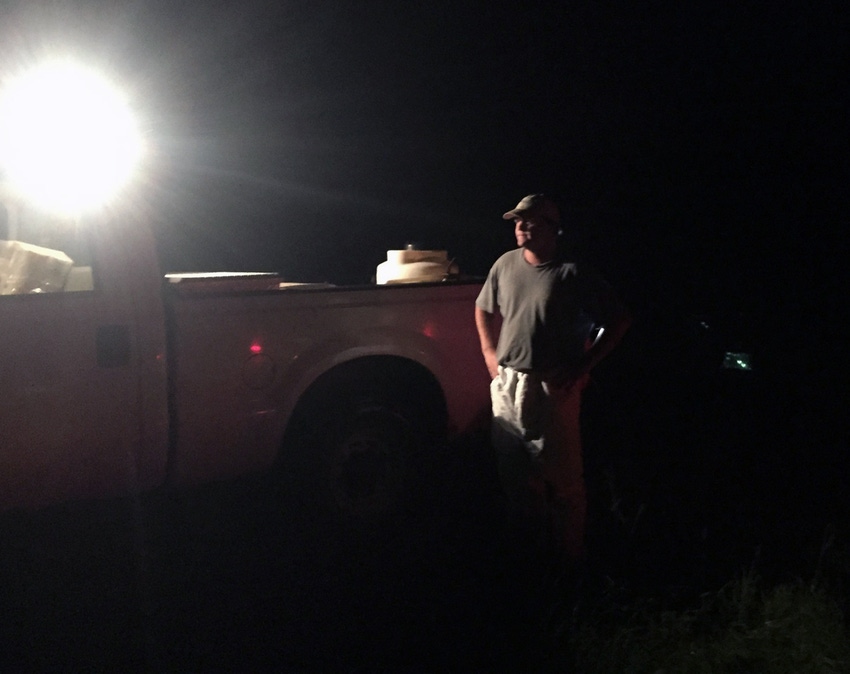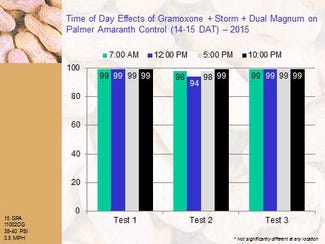January 26, 2016

Banker’s hours are just fine for most peanut herbicide applications.
In the last few years, much attention has been focused on the potential effects of time of application on pesticide performance. A multitude of research shows Liberty (glufosinate) does not work very well when applied too early or too late in the day. Other research has shown that southern stem blight or white mold control in peanut can be significantly improved by applying fungicides in the dark.
Time of day effects are often species and chemical dependent.
Recently, I was asked by an East Georgia county extension agent if Palmer amaranth control in peanut could be improved by applying Gramoxone (paraquat) cracking sprays at different times of the day, particularly at night. There is some evidence to suggest that paraquat activity can be enhanced by applications in low light conditions. Since there was a paucity of information about this very specific issue in peanuts, I decided to conduct a few experiments in 2015.
Results from 3 different field trials are presented in the table.

A combination of Gramoxone + Storm + Dual Magnum was applied to Palmer amaranth plants (1-6” tall) at various times of the day (7 am, 12 pm, 5 pm, and 10 pm). This herbicide cocktail is my standard recommendation for early-postemergence weed control in peanuts. Treatments were applied with a backpack sprayer calibrated to deliver 15 GPA using 11002DG nozzle tips (3.5 MPH and 38-40 PSI). It’s pretty clear to me that time of day had no influence on Palmer amaranth control with Gramoxone + Storm + Dual Magnum in these tests.
A few other things I learned during these tests. Frequent afternoon rain showers in south Georgia during the hazy-hot days of summer make pre-determined times of application challenging. Even with lights worthy of the Discovery Channel’s Deadliest Catch, it is still hard to see in the dark at 10 pm (Figure 1). At 10 pm in the middle of nowhere, there are definitely things that go bump in the night. Kind of creepy at that time!
Another good reason to consider not applying herbicides at night has to do with a plant physiological process called nyctinasty. Simply put, nyctinasty is the closing of leaves or petals at night. Not all plants do this. However, peanut and sicklepod are two plants frequently found in southern farm fields that do. Weeds that experience nyctinasty might be more difficult to control with postemergence herbicides because leaf surface area is reduced during leaf closure.
Although white mold control in peanuts with fungicides can be improved with night sprays, my results suggest there is no good reason to apply Gramoxone + Storm + Dual Magnum at night in peanut.
When the lights go out, I prefer to be sleeping. Again, generally speaking, banker’s hours are fine for most herbicide applications. If you want to improve postemergence weed control in peanuts, focus more of your attention on timely applications, slower tractor speeds, optimum boom heights, water volume, and nozzle selection.
As always, good weed hunting!
You May Also Like




